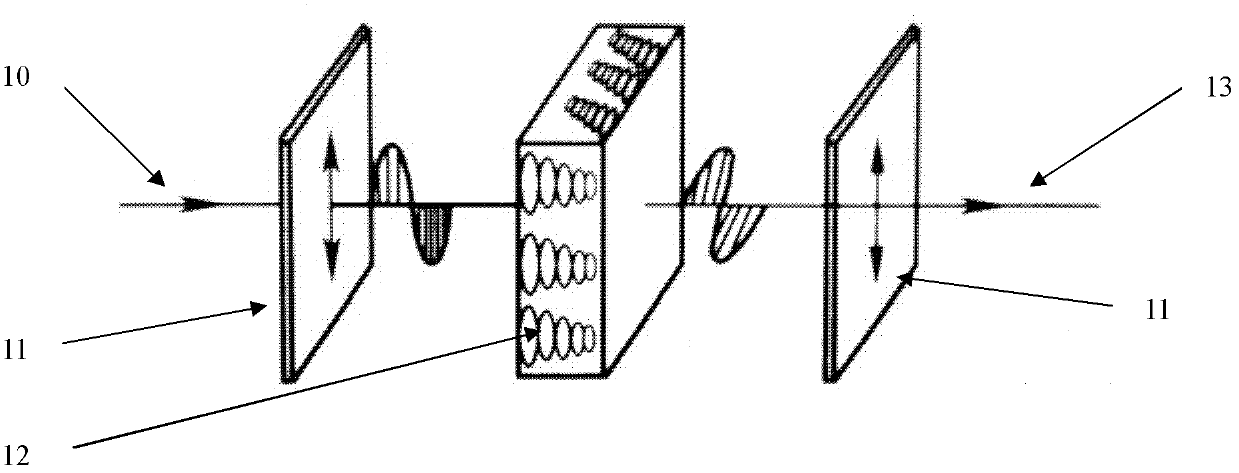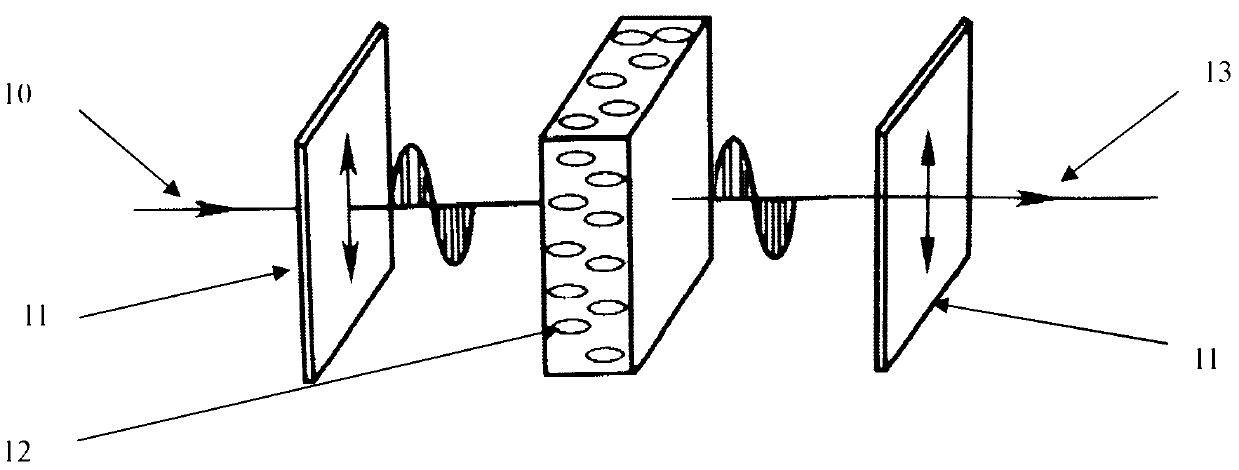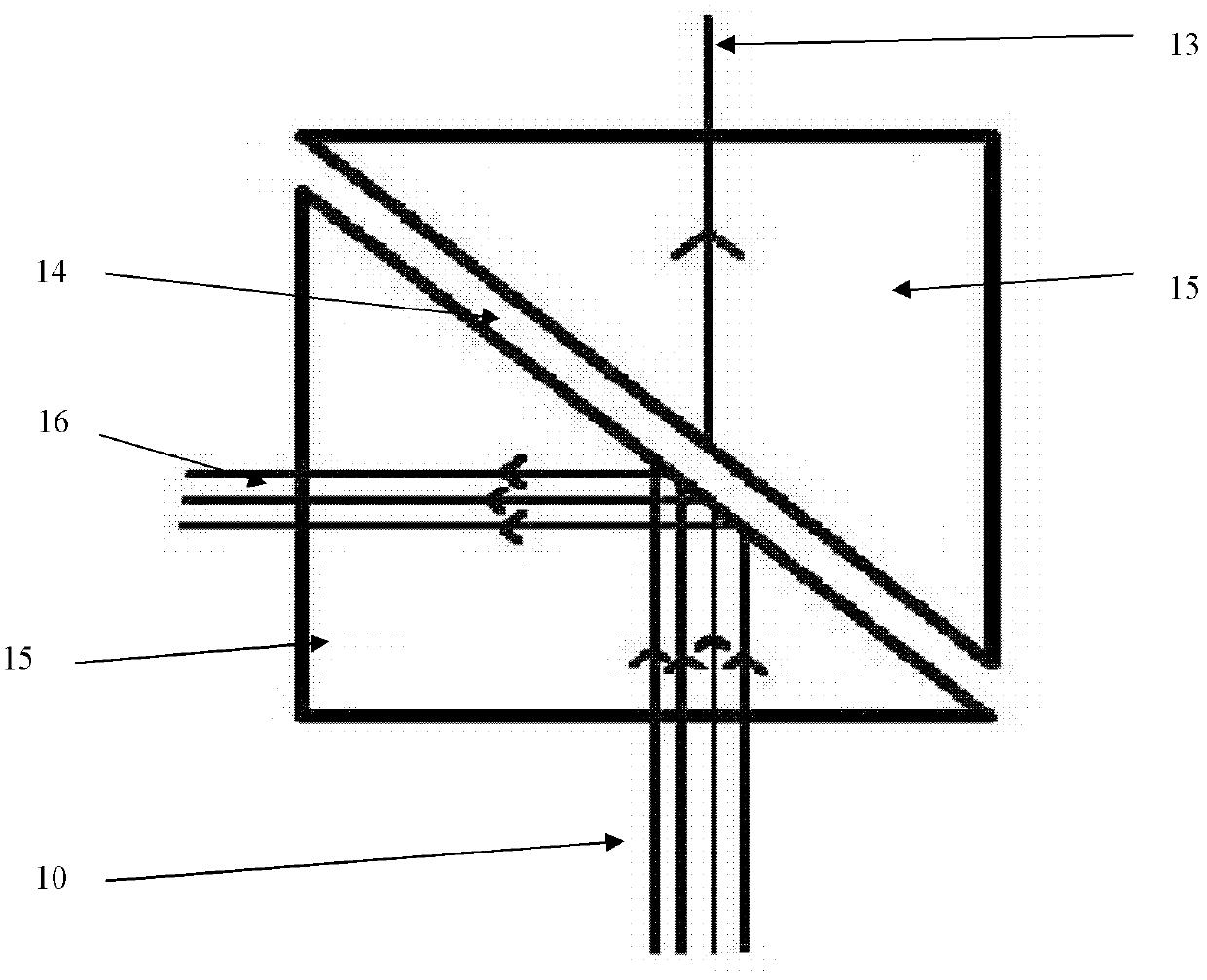Display panel
A display panel and rear substrate technology, applied in nonlinear optics, instruments, optics, etc., can solve the problems of loss of light energy, poor panel contrast, low yield, etc., and achieve high luminous efficiency, high contrast, and high utilization rate. Effect
- Summary
- Abstract
- Description
- Claims
- Application Information
AI Technical Summary
Problems solved by technology
Method used
Image
Examples
Embodiment 1
[0036] Embodiment 1: The light modulator array 5 is packaged between the front substrate 1 and the rear substrate 3. The front substrate 1 is a transparent glass substrate, and strip-shaped scanning electrodes 4 are arranged in parallel at equal intervals on its lower surface. The scanning electrodes 4 are prepared on Transparent conductive electrodes on the glass substrate; the rear substrate 3 is also a transparent glass substrate, and strip-shaped address electrodes 6 are arranged in parallel at equal intervals on its upper surface, and the address electrodes 6 are transparent conductive electrodes prepared on the glass substrate; the scanning electrodes 4 It is perpendicular to the addressing electrode 6, and the width and thickness of the scanning electrode 4 and the addressing electrode 6 are the same; the light modulator array 5 is composed of many tiny light modulators 2, and the number of light modulators is determined by the pixels of the display panel. One pixel is c...
Embodiment 2
[0037] Embodiment 2: On the basis of the above embodiment 1, the backlight 7 is replaced by a cold cathode fluorescent lamp (CCFL), and equipped with a diffuser plate 9 and a prismatic plate 8, so that the luminous effect is good, and the cold cathode fluorescent lamp emits white light. A color filter is added between the backlight source 7 and the light modulator array 5, and one display pixel contains three color filters and three light modulators 2, which are in one-to-one correspondence in position, and correspond to red, green, blue tricolor, such as Figure 8 .
Embodiment 3
[0038] Embodiment 3: On the basis of Embodiment 1, the backlight source 7 is replaced by a plasma flat light source, and the plasma flat light source emits white light. A color filter is added between the backlight source 7 and the rear substrate 6, and one display pixel corresponds to three color filter units and three light modulators 2, the three color filter units are red, green and blue respectively, and one pixel There is a one-to-one correspondence between the corresponding color filter unit and the light modulator.
PUM
 Login to View More
Login to View More Abstract
Description
Claims
Application Information
 Login to View More
Login to View More - R&D
- Intellectual Property
- Life Sciences
- Materials
- Tech Scout
- Unparalleled Data Quality
- Higher Quality Content
- 60% Fewer Hallucinations
Browse by: Latest US Patents, China's latest patents, Technical Efficacy Thesaurus, Application Domain, Technology Topic, Popular Technical Reports.
© 2025 PatSnap. All rights reserved.Legal|Privacy policy|Modern Slavery Act Transparency Statement|Sitemap|About US| Contact US: help@patsnap.com



